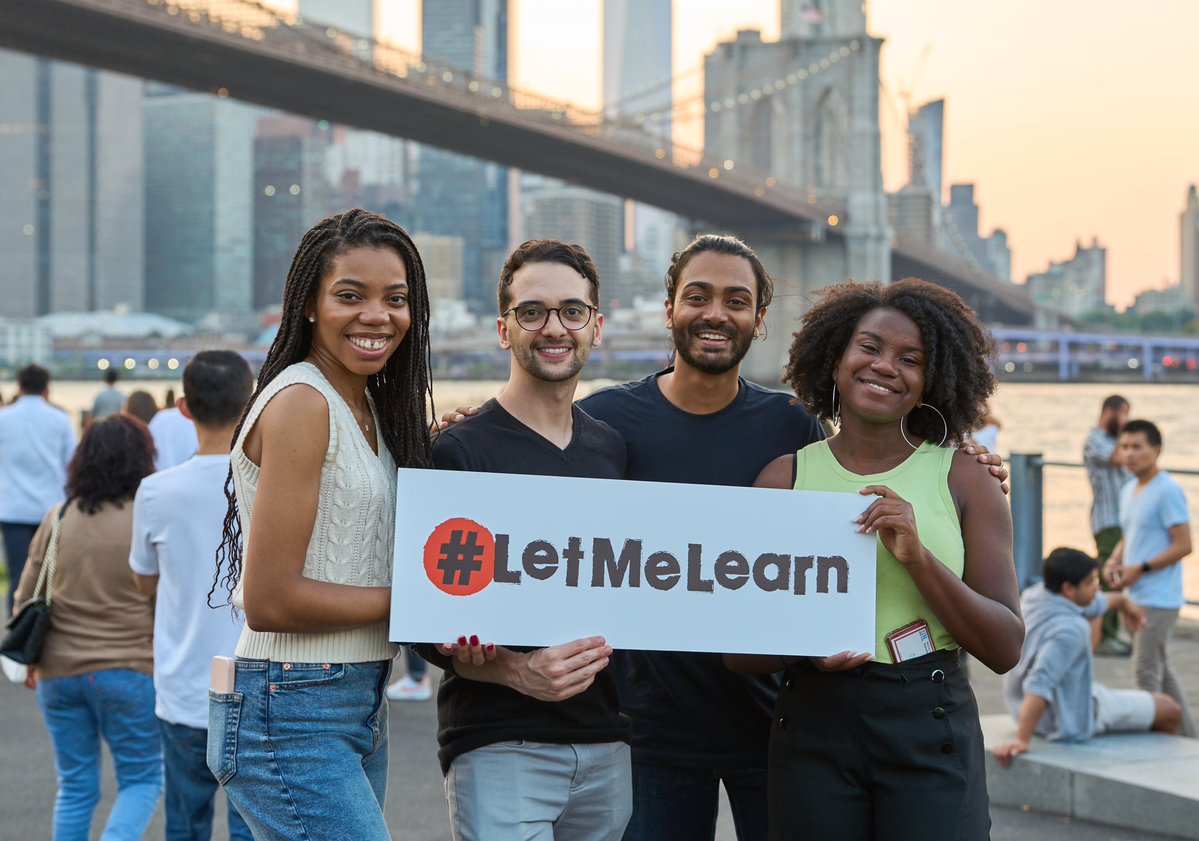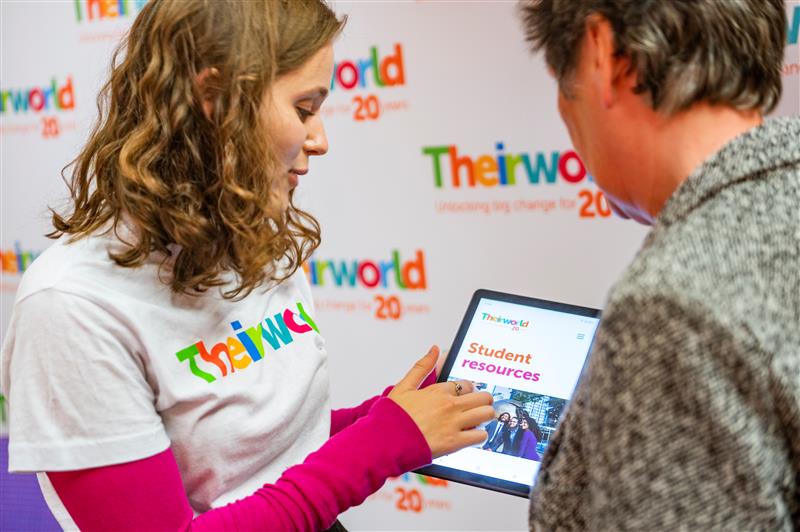
As 70m flee conflict and oppression, Theirworld brings hope to refugee children on Greek islands
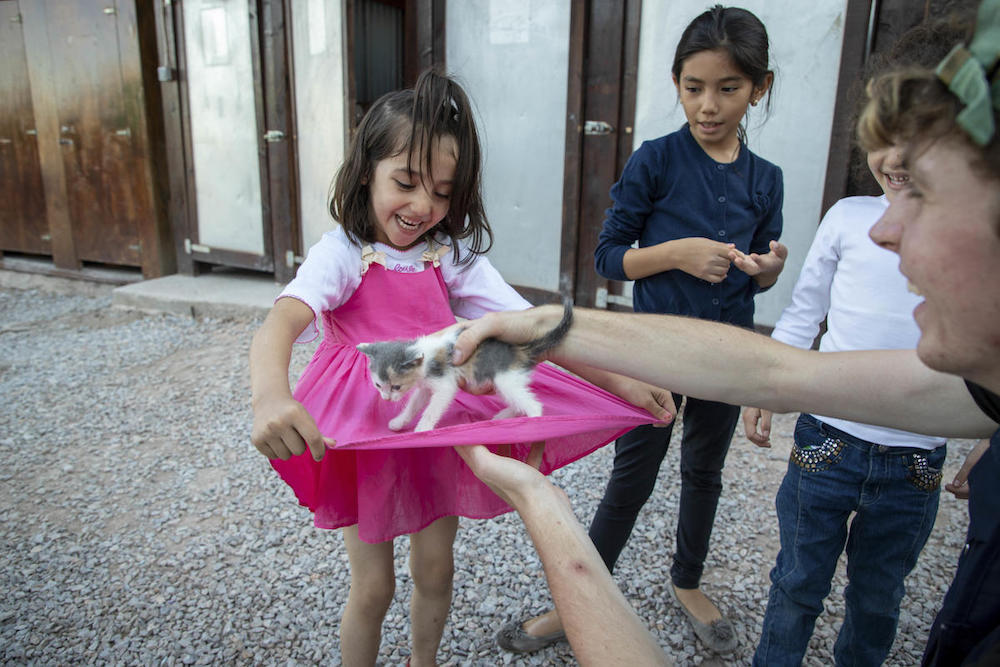
Children in conflicts, Children's welfare after natural disasters, Days in the childhood development calendar, Education Cannot Wait, Education in emergencies, Justin van Fleet, Refugees and internally displaced people, Theirworld
On the eve of World Refugee Day, a record number of people have been forcibly displaced - but a new project will deliver education to children from war-torn countries.
Just when you thought it couldn’t get any worse, the global refugee crisis has deepened. For the sixth year in a row, the number of people forcibly displaced from their homes by conflicts, violence and persecutions has risen – to another record high of 70.8 million.
That’s a massive increase on the 43.3 million total in 2009. There are now 25.9 million refugees, 41.3 million displaced in their own countries and 3.5 million asylum seekers (those waiting for refugee status).
Over half of them are children and adolescents under 18 – many of them out of school and at risk of child labour, early marriage, exploitation and recruitment by armed forces.
The shocking statistics were revealed today – on the eve of World Refugee Day – by the United Nations refugee agency UNHCR in its annual Global Trends report. It showed there were 13.6 million newly displaced people in 2018.
Ongoing conflicts – including Syria, Iraq, Yemen, South Sudan and the Democratic Republic of Congo – contributed hugely to the record total, alongside the Rohingya crisis, a big internal displacement in Ethiopia (1.56 million people on the move) and huge numbers fleeing the economic meltdown in Venezuela.
“What we are seeing in these figures is further confirmation of a longer-term rising trend in the number of people needing safety from war, conflict and persecution,” said Filippo Grandi, the UN High Commissioner for Refugees.
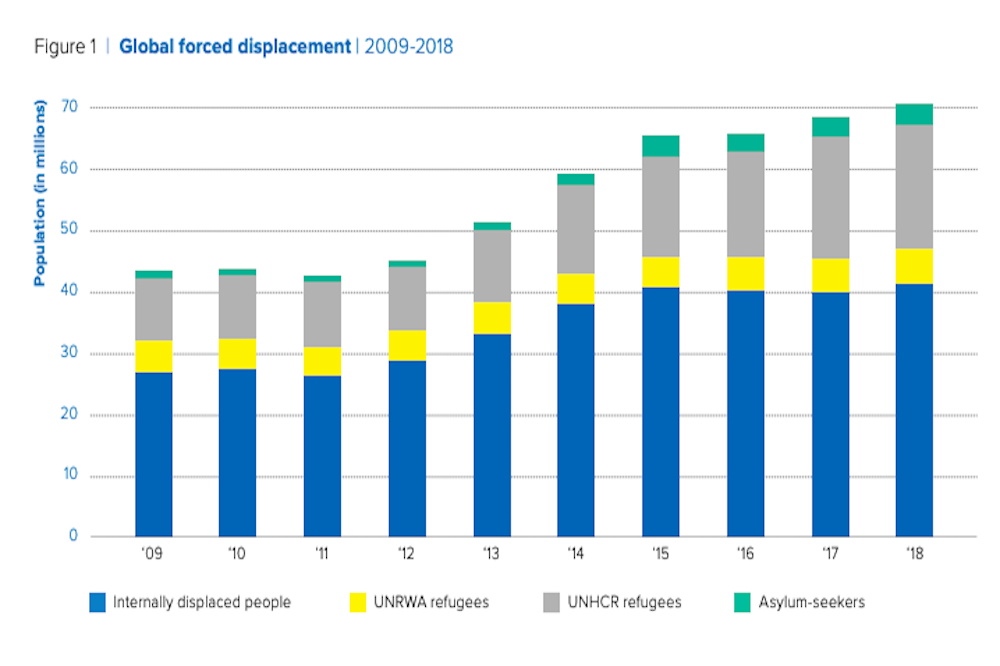
From UNHCR’s Global Trends report on forced displacement. The actual figure for 2018 is likely to be even higher, as the UN says the Venezuela crisis is not fully reflected
“While language around refugees and migrants is often divisive, we are also witnessing an outpouring of generosity and solidarity, especially by communities who are themselves hosting large numbers of refugees.”
Millions of children forced from their homes face years of uncertainty, fear and lack of opportunity.
Education is crucial during and after humanitarian emergencies, which also includes natural disasters. As well as the obvious benefits of learning, being in a safe school with other children and teachers can help them to recover from the trauma they have experienced.
And while conflicts in sub-Saharan Africa and catastrophic floods in south Asia dominate the headlines, there is a refugee education problem on Europe’s doorstep – in Greece.
The Greek Aegean islands – whose beaches are packed with tourists just now – are also home to 15,000 refugees and asylum seekers, according to UNHCR. Over a third of those who arrived last year were under 18 and most came from war-torn Afghanistan, Syria and Iraq.
Many of those children living in poor conditions at reception centres will soon get access to education thanks to a partnership involving Theirworld – through the charity’s work with the Dutch Postcode Lottery – and Education Cannot Wait (ECW), the fund for education in emergencies.
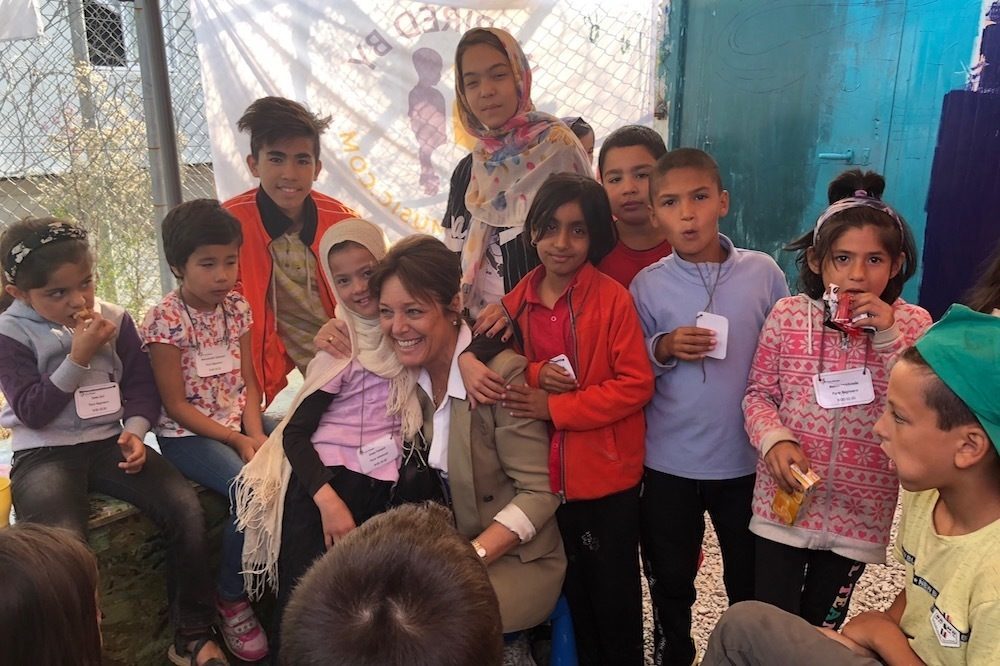
Yasmine Sherif, Director of Education Cannot Wait, meets refugee children during a trip to the Greek Aegean islands (ECW)
Theirworld President Justin van Fleet said: “All too often, when conflict or crisis erupts, the educational needs of refugee children and youths are an afterthought. The situation in the Greek islands is no exception.
“Within a few weeks, thanks to Theirworld and the Dutch Postcode Lottery, projects will begin in the Greek island camps. These will offer non-formal education to children designed to jumpstart the learning process and restore their self-confidence and mental resilience, bringing a sense of normalcy to an otherwise chaotic environment.”
ECW Director Yasmine Sherif visited the Greek islands of Kos and Lesbos in October. She met children, parents, teachers, and officials from local government, UN agencies and partner organisations.
“I have seen a lot of human suffering in my work over three decades in Africa, Asia, the Balkans and the Middle East,” she told Their News. “While one should not compare suffering, the situation for refugees on the Aegean islands is among the worse I have seen.”
UNHCR said 2,600 children aged five to 17 are living in reception camps on the islands and have little access to formal education.
Sabri Madi, 13, is a Palestinian boy who attends an informal education centre set up by UNHCR and partners on the island of Leros. He started Greek language lessons soon after arriving from Turkey, where his family had fled after threats following the death of his father.
“I love the sound of Greek words. I learn them very quickly,” said Sabri.
All too often, when conflict or crisis erupts, the educational needs of refugee children and youths are an afterthought Justin van Fleet, Theirworld President
16-year-old Mohamed, who fled the Yemen conflict, also goes to a school set up by UNHCR on the island of Kos.
“This is my second home,” he said. “I love everything about school.”
Only 23% of adolescent refugees across the world are at secondary school, compared to the global rate of 84%. Even at primary-age level, only 61% of refugee children are getting an education, compared to nine in 10 worldwide.
When an emergency happens, education is often the first service to be interrupted and the last to be reinstated. Relief aid naturally goes to the immediate concerns of food, water, shelter and protection.
Getting children into school is often an afterthought – with only 2% of humanitarian aid going to education. Theirworld has been campaigning for a bigger slice of aid budgets to be diverted towards helping children into school.
“To address the systemic gap in the system, more than 50 leading charities, convened by Theirworld, campaigned to set up Education Cannot Wait,” said van Fleet.
“It has already reached 1.3 million youth with education in countries ranging from Colombia and Ecuador to Syria and Somalia.”
Now attention will shift to the Greek islands, where the education ministry said 12,480 refugee students are enrolled in public schools, mostly on the mainland.
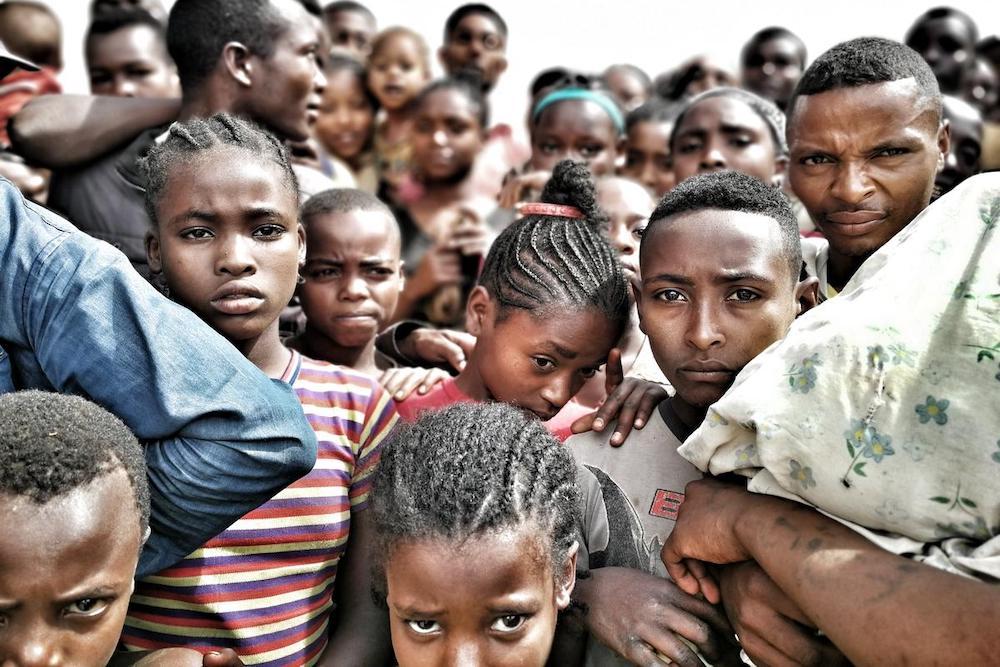
An internal displacement crisis in Ethiopia has seen over 1.5 million on the move – including these children sheltering in a manufacturing centre (UNHCR / Anna Helge)
Plight of the displaced
Here are some of the major statistics from 2018 revealed in UNHCR’s Global Trends report.
An average of 37,000 people were newly displaced every day.
67% of all refugees came from just five countries – Syria (6.7m), Afghanistan (2.7m), South Sudan (2.3m), Myanmar (1.1m) and Somalia (900,000).
For the fifth year in a row, Turkey was host to the biggest refugee population (3.7m, 98% of them from Syria). Also in the top five were Pakistan (1.4m, almost all from Afghanistan), Uganda (1.2m), Sudan (1.1m) and Germany (1.1m).
Lebanon continued to host the largest number of refugees relative to its national population – one in six people was a refugee. Jordan (one in 14) and Turkey (one in 22) ranked second and third.
The country with the highest number of internally displaced people was Colombia with 7.8 million.
2.9 million displaced people returned to their areas or countries of origin, including 2.3 million IDPs and nearly 600,000 refugees.
More news

